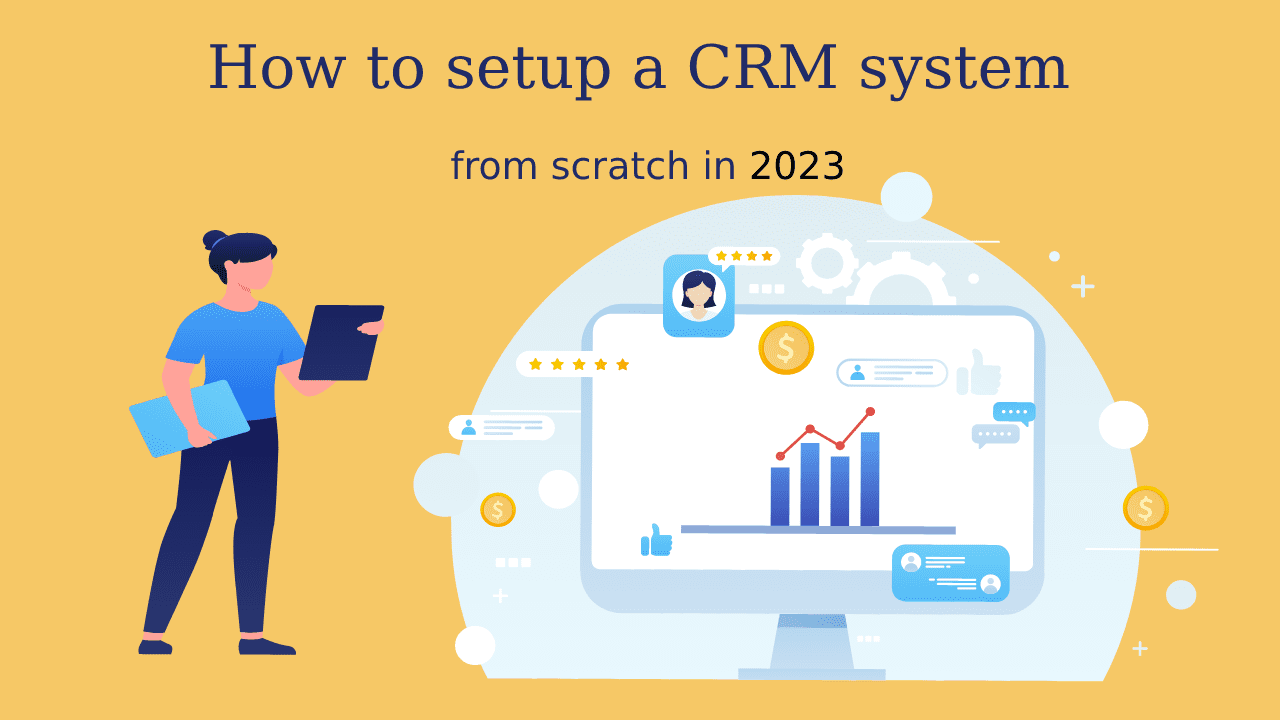Table of Contents:
- Introduction
- How to Set Up a CRM System From Scratch
- Benefits of Custom CRM Software
- Wrap Up
A custom CRM program must be created from the start, which takes a lot of time and money. Should you spend time and money developing a new CRM program when there are already well-known options like Apptivo, Salesforce, and Oracle available? I go into great length on the advantages of custom CRM software in this blog post. We’ll also go into detail on how to create a CRM system from scratch.
How to Set Up a CRM System From Scratch
Does it sound like a floppy disc from 1996 when you say that? Perhaps, however, as you go through the setup process, you’ll see how much of an impact a modern CRM installation can make on your sales. The next six steps will show you how to set up a CRM system:
- Create a customer journey map
- Describe your sales and business procedures.
- Make your stages, pipelines, and custom fields.
- Integrate your tools, migrate your customer data, and automate laborious procedures
- Set permissions and add users.
Create a customer journey map
What you need your CRM to do for you will determine how your CRM strategy is set up. Your business’s method of customer acquisition will determine what your CRM needs to do for you.
There are three crucial questions you must answer to sell as a small business:
- How do others learn about you?
- How do you tell when someone is prepared to buy?
- How do you sell and complete deals?
You’ll easily recognize areas where a CRM system can be useful once you have a clear understanding of how you locate and sell to customers. The outcome? A solution that eliminates the managerial burden of keeping track of each lead and client.
Describe your sales and business procedures
The most important details in this text are the definition of a sales process, the lead qualification process, the sales outreach cadence, the sales pipeline stages, and the areas to improve by adding additional steps. The marketing team has a clear goal to get prospective customers to the handoff point, while the sales team has clear expectations. The CRM system can facilitate the handoff with automated lead scoring, site tracking, and marketing data. The sales process includes a lead qualification process, a sales outreach cadence, sales pipeline stages, and areas to improve by adding additional steps.
Make your stages, pipelines, and custom fields
Custom fields, pipelines, and stages are tools used to store and show data that is unique to each contact. Custom fields include name, email address, phone number, favorite colors, siblings, job title, membership, start date, birthday, etc. Pipelines are groups of stages for one sales process. Processes should be as simple as possible to avoid confusion or non-use. Once processes are reflected in the CRM, it is time to bring in customer information.
Integrate your tools, migrate your customer data, and automate laborious procedures
Map out custom fields and pipelines before migration. ActiveCampaign’s migration services take care of most of the migration, or you can import contacts with a.csv file. Create automation to tag contacts and add them to the pipeline. Set up guidelines for naming conventions and data entry. Record activity related to opportunity tracking.
Set permissions and add users.
Integrating other tools with a CRM requires three main methods: native or direct integrations, 3rd party or middleware integrations, and application interface (API) integrations. Each CRM has different capabilities, so it is important to make sure the connections you’re looking for are possible when choosing a CRM.
Benefits of Custom CRM Software
You are exempt from paying for inactive services
Building custom CRM software from scratch is more cost-efficient than using pre-built packages, as it includes features that are not necessary.
Your current workflows can be seamlessly integrated with your CRM system
Custom CRM software development allows you to design a system that integrates with existing workflows and automates only those that you deem fit, allowing departments to continue to function.
The customer experience is entirely under your control, and you have access to helpful customer data
Custom-built CRM software gives you control over customer experience journeys and data, allowing you to create custom reports to understand your customers.
You can create your own ecosystem of CRM apps
A flexible CRM system can help departments maximize their efficiency by creating apps that can be tested and changed to meet their needs.
Wrap Up
Although setting up a CRM might be challenging, done right, it can produce a potent tool that is suited to your company and functions for you. These are questions you won’t need to ask any longer.
“From where did this lead originate?”
“In what sense do they have an interest?”
“Are they enthusiastic?”
“Have I checked in yet?”
“Are they compatible?”
“Do I need to call them?”
“Have we got their phone number?”
Less time will be spent looking, and more time will be spent selling. You’ll stop asking yourself what you ought to do and instead focus on what you need to do. And during the entire customer experience, your CRM will be there for you.
